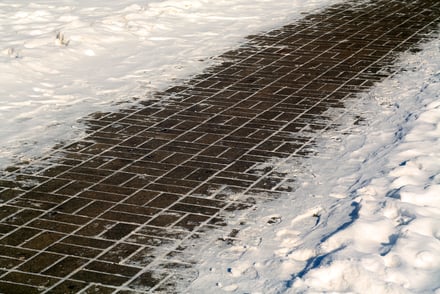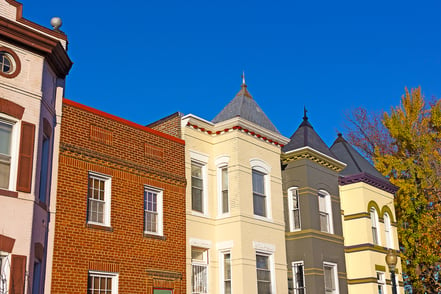The timeless charm of an historic brick exterior makes it a perennial favorite in the housing market. Homes with unique identities and rich back-stories have an inherent curb appeal built right in—but only if they are properly maintained. Like any other material, brick requires some maintenance to keep it looking its best. Annual inspections of the brick and mortar can identify minor flaws before they become big problems, but all brick homes will require a full tuckpointing every few decades. Fresh tuckpointing provides a crisp appearance and protects the building’s structural integrity. Here’s how an investment in tuckpointing can increase your home’s value. 
What Is Tuckpointing?
Tuckpointing is the removal of old mortar between the bricks and replacing it. The new mortar is applied uniformly, so that the joints between bricks look as though they were freshly placed there. As beautiful as it is, tuckpointing serves a greater purpose.
Over time, all mortar deteriorates. Exposure to the elements, pollution, dirt, and other everyday factors slowly cause the mortar to break down. In historic brick homes, it’s essential to use specialty lime-based mortar because it allows your bricks to dry by cushioning them. The composition of historic brick is softer than its contemporary counterparts which affects the way that it absorbs and releases water. When the lime mortar is damaged and tuckpointing is ignored, your bricks are at risk, especially during freeze-thaw cycles. Missing, damaged, or cracked mortar could also allow water to enter your home’s interior, which can create a host of water-related damage, and the ideal conditions for mold and mildew.
Modern Materials Can Damage Brick
If you are looking to increase the value of your historic brick home, using contemporary mortar formulations is not the way to do it. Modern cement mortar has a different composition than traditional lime mortar; in this case, newer is not better. Cement mortar does not allow the movement of the moisture in the same way as the traditional mortar. Due to the fact that it has a different hardness and strength profile than lime mortar, it can actually damage the softer historic brick and cause it to crack. Crumbling bricks are a surefire way to bring down your home’s value.
It is important to remember that historic brick homes built before the 1920s do not have structural supports for the brick—the brick itself creates structural integrity. Therefore, to increase the value of your home when you invest in tuckpointing, using lime-based mortar and craftspeople who specialize in tuckpointing historic brick is absolutely essential to success and longevity.
The Value of Tuckpointing
Historic brick exteriors maintained by experts utilizing traditional methods provides great aesthetics, ensures structural integrity for decades, and demonstrates real pride of home ownership. Thus, the value of your historic brick home is significantly increased by the combination of these three factors.
The scope of the project makes this a job for professionals. Although it takes a bit of time, traditional brick-and-mortar craftspeople are faster and more accurate than the average homeowner. They implicitly understand how the brick and the mortar work together, how to mix the mortar properly, how to achieve the perfect finish, and how to ensure that their work will last for decades. Tuckpointing to increase your home’s value is an excellent, long-lasting investment.
Renaissance Development, a leader in brick restoration and historic preservation, specializes in the restoration of a historic brick building’s mortar joints using traditional methods (tuckpointing) and materials. Contact us for a free site visit and project quote.
Tags:
Repair, Renovation, Exterior brick, Research your old home, Tuckpointing job, Spot tuckpointing, preventive maintenance, old brick, mortarFeb 9, 2023 8:45:00 AM


